Betta fish are one of the most resilient fish species. This is one of the primary reasons they are so popular among beginner aquarists. However, they are living creatures at the end of the day. So, it isn’t surprising that they are susceptible to many possible diseases.
Cotton wool disease, otherwise known as Columnaris, is a common condition. It is a type of bacterial infection that commonly affects bettas and guppies. The condition is treatable; however, it poses many complications to the fish’s health.
This article will explore more about the cotton wool disease in betta fish and the symptoms, causes, and treatment.
Table of Contents
What Is Cotton Wool Disease in Betta Fish?
Besides Columnaris, Cotton Wool Disease is alternatively known as saddleback disease, guppy disease, and cottonmouth disease.
The condition is relayed due to a type of fish fungus that mimics the appearance of cotton, hence the name. Research suggests that the condition is caused by a bacterium called Flavobacterium columnare.
Since the bacterium is profoundly available in tropical waters, it affects the marine inhabitants in such living conditions.
Are Cotton Wool Spots Serious?
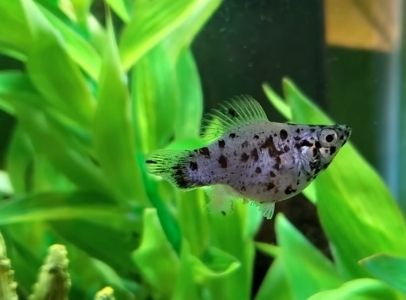
Unlike in humans, where the cotton wool spots affect the retina, it impairs their overall body functions for bettas. From causing skin irritation to the fading color, it affects the bettas worse.
In extreme cases, the disease can even lead to complications like fin damage, ulcers, and cotton-like growths on the entire body.
Although the condition is treatable to an extent with correct remedies, cotton wool spots in bettas are quite a serious condition.
What Causes Cotton Wool Disease in Betta Fish?
As we mentioned before, cotton wool disease in a betta fish is caused by the bacteria Flavobacterium columnare. Although the bacterium resembles the appearance of a fungus, it isn’t a distinct fungal infection.
Instead, the cotton wool disease is a bacterial infection that mostly affects bettas. It isn’t a very common type of fish disease but is still one to be aware of.
The condition profoundly affects the gills and the skin of a betta fish, leading to damage and prominent infections.
Symptoms Of Cotton Wool Disease in Betta Fish
Simply knowing about the cotton wool disease isn’t enough. You need to know about the ways to overcome the condition too. Unlike most bacterial infections, the cotton wool disease progresses in stages. So you won’t notice the symptoms outright.
Some of the common symptoms to look out for are:
Skin irritation
Parasitic infections like Ich make the bettas’ skin feel itchy and uncomfortable. You will often notice your betta scratching their body against the tank decorations and the substrate. That is also a common sign of cotton wool disease. However, look out for the appearance of skin irritation. If you notice prominent white spots, it is Ich and not Columnaris.
Fin damage
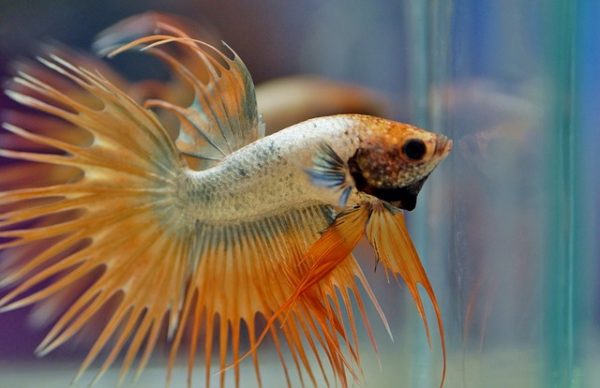
Bettas hold their maximum beauty in their flared fins. So, when they suffer from conditions like the cotton wool disease, it reflects their fins’ appearance. Ragged and frayed fins are a common sign. However, if the fin starts rotting, you should know it is a sign of fin rot and not a cotton wool disease.
Fading colors
Bettas have a bright and vivid color palette. So, if you notice the betta losing its colors eventually, it could be a sign of stress or cotton wool disease.
Cotton-like growths
One of the most distinguishing symptoms is the white-spotted, cotton-like growth. Look for these around the fins, mouth, and length of the fish’s body. In addition, if you notice cotton tufts and a thread-like appearance, it could indicate the cotton wool disease.
Ulcers
Along with skin irritation, the prominent appearance of sores, redness, and ulcers, is also a sign of cotton mouth disease.
Slimy mucus
Look for prominent shiny and slimy mucus coating on the head, gills, or even the betta’s mouth. It is a result of the hyperactive immune system of the betta.
Swelling in the lips
Although quite rare, sudden swelling of the betta’s lips is also indicative of cotton mouth disease. This can lead to the eventual rotting and death of the betta. So, you have to work proactively to treat it. The swelling can also lead to loss of appetite in the fish.
Gill necrosis
Last but not the least is gill necrosis, the most severe and fatal symptom. You will notice the gills changing their color from bright red to dull brown. This is the last stage of the cotton wool disease. Unfortunately, if it reaches this stage, there’s not much that you can do to reverse the impacts.
Betta Fish Cotton Wool Disease Treatment
Now that you know about the symptoms, let us move ahead with the treatment. If the symptoms go by, we can say that the cotton wool disease is quite a severe ailment. As a fish keeper, you need to work proactively to help your betta recover from it.
Remember that you can’t expect immediate results with the treatment. Since it is a bacterial infection, recovery will take some time.
Here’s what you can do:
Quarantine your fish
Since the cotton wool disease is an infectious disease, your first line of treatment is isolation. Instead of trying to treat your affected betta in the community tank, separate and quarantine them.
However, even the recovery tank should have optimal water parameters that the betta needs. So, we’d recommend first sorting out the quarantine tank’s water parameters. And, then you should transfer the affected fish.
Try drug therapy
For quicker treatment, antibiotics are your best friend in this condition. Since a gram-negative bacterium causes the condition, you need a strong drug to counteract it.
Maracyn and Maracyn-Two are very effective in treating the condition. However, ensure that you only treat the water with antibiotics after removing the chemical filters out of the tank.
Another popular drug therapy is Oxytetracycline. This can be given during their feeding via specially treated fish foods. Again, we’d recommend consulting a vet to get a clear idea about the dosage and administration before going ahead.
Regulate the water temperature

Bacteria need warmth to propagate. So, if the tank’s water temperature is warm, reduce it. We’d recommend doing this in the recovery or quarantine tank instead of the main tank. Suddenly lowering the water temperature in a community tank might affect the other fish.
However, keep the water temperature between 75˚and 77˚ Fahrenheit for better results. Doing so will make the water inhabitable for the bacterium, treating the condition.
Make water changes
Untreated and unclean water enhances the rate of infection in the home aquariums. So, when it comes to treating cotton wool disease, water change is an absolute must.
You don’t have to change the entire water. However, we’d recommend starting with a 25% water change every other week for the safe side.
Treat the tank water with aquarium salt
Adding aquarium salt to the fish tank can proactively treat the cotton wool disease. It manages the stress levels, but the salts also boost the betta’s immunity.
With a better immunity, fighting a bacterial infection is a lot easier. However, you have to start with a minimal dosage per gallon. 0.3-1.5% salinity is considered ideal for eliminating bacterial growth in the water.
How To Prevent Cotton Wool Disease in Betta Fish?
Given that Columnaris is such a severe and fatal condition, we’d recommend preventing it at all costs. You have to do everything to prevent your betta from falling victim to the condition.
Here’s how you can prevent it:
Focus on keeping the tank clean
Unclean living conditions are never ideal for anyone, not even your betta. So, the easiest way to prevent bacterial infection is by keeping your tank clean.
Don’t always go by the exterior appearance of the tank. Sometimes, the cleanest tanks have the maximum colonies of bacteria.
Besides cleaning the water tank, scrape out excess algal growth from the tank. Additionally, clean the tank decorations too.
Also Read: Setting Up a Betta Aquarium Properly
Focus on water changes
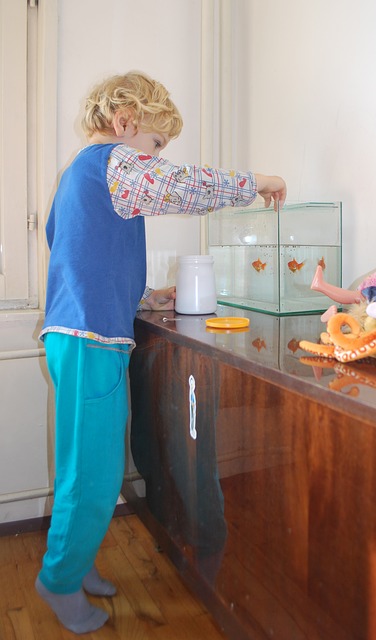
For optimal health of your betta, water changes are crucial. We aren’t emphasizing a 100% water change every week. However, try to change at least 25% of the water and replace it with clean water.
Weekly water change reduces the risks of excess bacterial and nitrite growth in the water. Also, it regulates your betta’s living conditions.
Quarantine any new additions
Since the cotton wool disease is so rare, it comes from external sources. You will often find the bacteria coming from a new fish you add to the tank.
In such cases, quarantine any new fish you buy. Keep them in a separate tank for at least 2 weeks before introducing them to the community tank.
During these two weeks, look for signs of infections and other alarming symptoms. If everything goes well, you can safely transfer them to the main tank.
Focus on the diet
What you feed your betta reflects on their health. A balanced diet with protein and live foods will improve their immunity and contribute to optimal health. Proper immunity helps the betta ward off any infection until it turns for the worse.
Choose correct tankmates
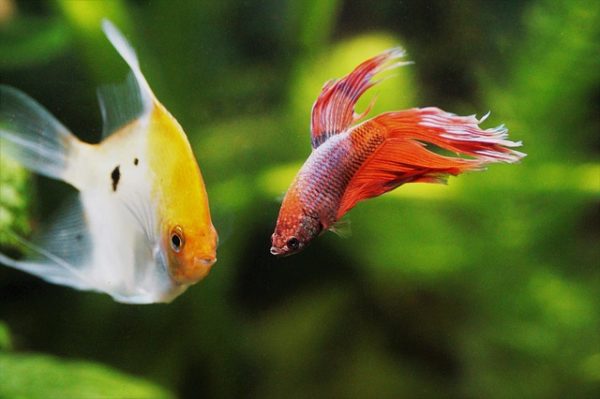
Bettas are resilient, but they are also very territorial. If there is a larger fish in the tank, they might find it threatening to their existence. Such instances lead to complications like stress.
Also, if you add aggressive tankmates, it can put the betta under stress. Overall, bettas become more susceptible to diseases when they are stressed. So, try to keep that marker to a bare minimum.
Can Cotton Wool Disease Spread Quickly Within Betta Species?
The cotton wool disease is very infectious and contagious. In addition, some strains of the disease are more contagious and can spread very quickly in the tank.
If you notice a betta showing signs of cotton mouth disease, remove and isolate them from the main tank immediately to prevent further spread.
How Long Does It Take to Cure Cotton Wool Disease?
Columnaris isn’t the easiest disease to treat and cure. So, if your betta has contracted it, be assured that it might stay in the tank for up to 32 days. However, the duration generally varies depending on the degree of spread of the bacteria and the water conditions.
Different Kinds of Betta Diseases and How to Cure It?
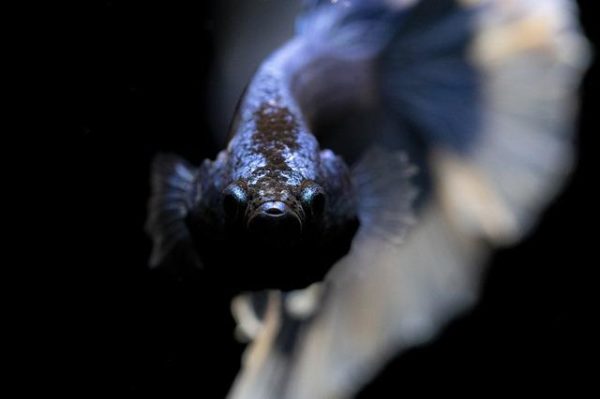
Besides the severe cotton wool infection, every fish keeper should be aware of a few other betta diseases.
Some of them include the staple infections, and then you also have diseases caused due to aggression, bullying, and fights in the tank.
Following is a list of the different kinds of betta diseases:
- Dropsy
- Fin and tail rot
- Fish fungus
- Pop eye
- Hemorrhagic
- Velvet
- Ich
- Anchor worms
- Eye cloud
- Hole in the head
- Tumors
- Swim bladder disorder
- Furunculosis, etc.
The easiest way to treat most betta diseases is by changing the water frequently, keeping the water clean, and feeding the fish on schedule. Sometimes, all you have to do is take optimal care of the fish and follow precautionary steps. Then, with proper care, your betta should thrive in the tank.
Also Read: How to Keep Your Fish Free from Disease
Wrapping Up
The cotton wool disease is quite a serious disease that affects bettas. With proper care and treatment, your betta should be able to make a full recovery. However, we’d still recommend that you practice preventive measures instead of focusing on the treatment.
Besides proper treatment, focus on feeding a proper and balanced diet to your betta. Focus on staying vigilant of the symptoms and take immediate steps to cure the condition.
No related posts.
